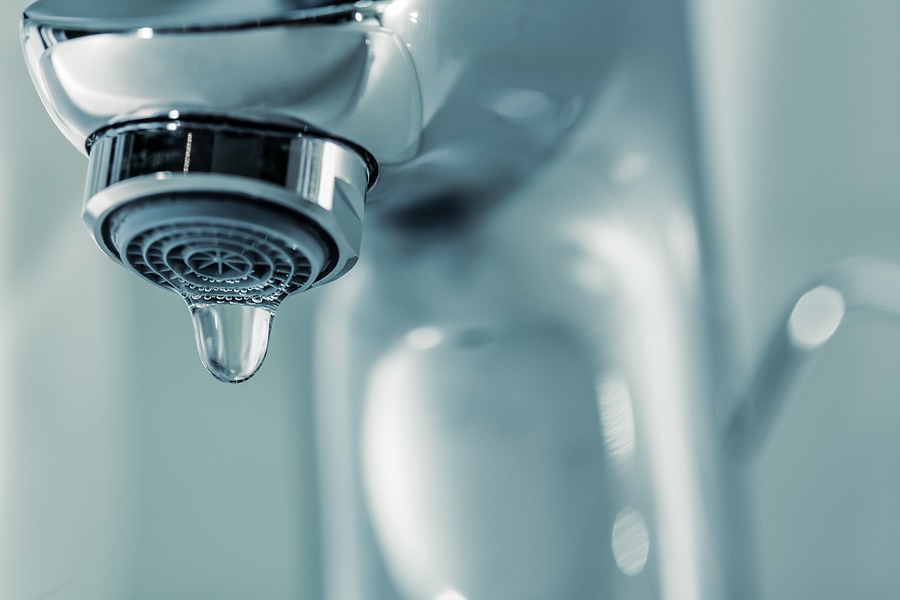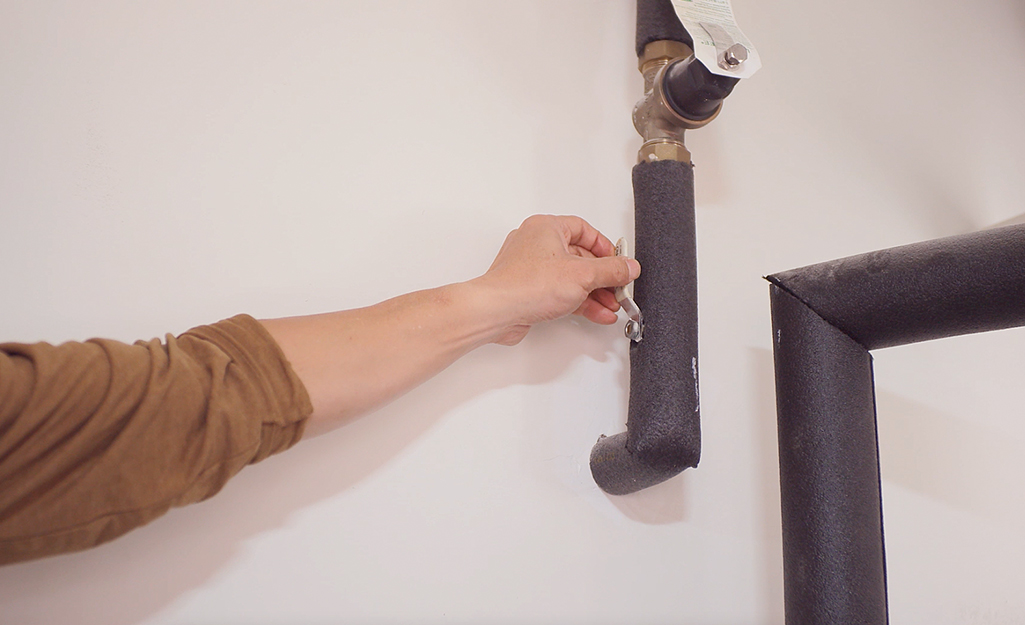What It's Critical to Mend a Faulty Faucet
What It's Critical to Mend a Faulty Faucet
Blog Article
In this article below you can discover additional extremely good details on the subject of Should I Repair or Replace a Leaky Faucet?.

Leaking faucets could feel like a small hassle, yet their impact exceeds simply the inconvenience of the sound. From drainage to incurring unneeded monetary costs and health and wellness risks, neglecting a leaking faucet can result in various effects. In this post, we'll look into why it's important to address this typical family concern immediately and successfully.
Waste of Water
Environmental Impact
Trickling faucets add dramatically to water waste. According to the Environmental Protection Agency (EPA), a solitary faucet dripping at one drip per secondly can lose more than 3,000 gallons of water each year. This not only pressures water resources but additionally affects ecosystems and wild animals based on them.
Step-by-Step Overview to Taking Care Of a Dripping Faucet
Devices Required
Prior to attempting to fix a dripping tap, gather the essential tools, consisting of an adjustable wrench, screwdrivers, substitute parts (such as washers or cartridges), and plumber's tape.
Usual Faucet Issues and Their Solutions
Recognize the sort of faucet and the details concern triggering the drip. Common troubles include damaged washers, rusty shutoff seats, or defective O-rings. Refer to maker directions or on the internet tutorials for detailed guidance on repairs.
Financial Expenses
Increased Water Expenses
Past the environmental effect, dripping taps can inflate water costs considerably. The built up wastage with time equates right into higher utility expenditures, which can have been prevented with prompt fixings.
Potential Residential Property Damages
Furthermore, long term dripping can result in harm to components and surfaces bordering the faucet. Water build-up can create discoloration, corrosion, and also architectural problems if left unattended, resulting in extra repair work costs.
Wellness Problems
Mold and Mold Development
The consistent presence of wetness from a leaking faucet creates a perfect atmosphere for mold and mold growth. These fungi not just endanger indoor air quality however additionally pose wellness risks, particularly for individuals with breathing conditions or allergic reactions.
Waterborne Conditions
Stationary water in leaking faucets can end up being a breeding ground for bacteria and various other virus, raising the threat of waterborne illness. Pollutants such as Legionella germs flourish in stagnant water, potentially leading to severe health problems when consumed or inhaled.
DIY vs. Specialist Fixing
Pros and Cons of DIY Repair
While some may try to deal with a trickling tap themselves, DIY repair work include their own collection of difficulties. Without proper knowledge and tools, DIY attempts can worsen the issue or lead to insufficient fixings, lengthening the problem.
Benefits of Employing a Specialist Plumber
Employing an expert plumber ensures that the underlying reason for the dripping tap is attended to effectively. Plumbing professionals possess the competence and devices to detect and repair tap problems successfully, saving time and decreasing the risk of further damage.
Ecological Duty
Specific Payment to Conservation
Taking duty for taking care of trickling taps lines up with wider initiatives towards water preservation and environmental sustainability. Every person's activities collectively make a substantial influence on maintaining priceless sources.
Lasting Living Practices
By prioritizing prompt fixings and taking on water-saving habits, people contribute to lasting living practices that profit both existing and future generations.
Safety nets
Routine Upkeep Tips
To prevent dripping taps, carry out routine maintenance such as cleaning up aerators, inspecting for leaks, and changing worn-out components quickly. In addition, consider setting up water-saving gadgets or updating to extra reliable fixtures.
Relevance of Prompt Services
Dealing with dripping faucets as quickly as they're discovered avoids more water wastage and prospective damages, ultimately conserving both water and cash in the long run.
Effect On Home Worth
Assumption of Well-Maintained Residential Property
Preserving a residential property in good condition, including addressing maintenance problems like trickling taps, boosts its perceived value and desirability among potential purchasers or occupants.
Impact on Resale Value
Features with properly maintained plumbing fixtures, consisting of faucets, command higher resale worths in the realty market. Attending to leaking taps can contribute to a positive impact during building assessments and arrangements.
Conclusion
Dealing with a trickling faucet surpasses simple comfort; it's a vital action towards conserving water, minimizing monetary expenses, and securing health and property. Whether with do it yourself repair work or specialist assistance, taking action to fix dripping faucets is a small yet impactful method to advertise liable stewardship of sources and contribute to a much healthier, much more sustainable future.
How to Fix a Dripping or Leaky Faucet
A leaking faucet is one of the most common problems that homeowners encounter, but it being commonplace doesn’t make it any less annoying. The constant drip drip drip of a leaking bathtub faucet, showerhead, or sink tap can disturb your home’s serenity. Left neglected, a dripping faucet can also result in higher water bills and discoloration or mold growth in your sink or plumbing fixtures.
Fortunately, you don’t have to be a trained plumber to know how to stop a dripping faucet. With some basic tools, replacement parts, and a little patience, leaky faucet repair is a breeze. In this article, we’ll explain what causes dripping faucets and how you can fix them.
What Causes a Leaking Faucet?
Kitchen and bathroom faucets come in all manner of designs, but most involve some combination of valves, O-rings, seals, and washers. The O-ring is usually the weakest link, but any one of these pieces can wear down over time. Heat, moisture, temperature fluctuations, minerals, mold, and movement can contribute to warping and corrosion, breaking the watertight seal. This just comes with the territory of being a homeowner. Everything is always subject to wear and tear, and some component parts of your appliances and fixtures need to be replaced on occasion. At least replacement O-rings are cheap!
More rarely, dripping faucets can be a symptom of excessively high water pressure. Were this the case in your home, you would probably notice that the leak is not isolated to one faucet. Water pressure issues are harder to resolve on your own. We recommend contacting a professional plumber if you suspect your water pressure is too high.
How to Fix a Dripping Faucet
Pipe wrench or monkey wrench Allen wrench set Screwdrivers Old towel or rag Shut off the water.
Before you do anything, you need to turn off the water to keep from drenching your kitchen or bathroom. You should find a valve under the sink and against the wall. Once you’ve turned this valve, try turning the faucet on to confirm that the water source has been cut off.
If you can’t locate your local valve for the faucet you’re working on, you can always shut off the water to the house at the main valve. Of course, this will prohibit anyone from using the sinks, showers, or toilets while you’re working on the faucet that’s giving you trouble.
Plug or block the drain.
You’ll be disassembling the faucet and removing some small bits of hardware. Plug the drain with a stopper or rag to avoid the possibility of a small screw falling into your P-trap.
Take apart the faucet assembly.
There are several varieties of kitchen and bathroom faucets, each with its own manner of assembly. For detailed instructions on how to disassemble your faucet, you can refer to the fixture’s manual or contact the manufacturer. If you know whether you have a ball, disc, cartridge, or compression faucet, you can find detailed schematics online.
In general, you need to begin by removing the faucet handles. You might notice a small screw that you’ll need to remove with a screwdriver or Allen wrench. If you don’t see any visible securing hardware, it’s likely hidden under a decorative cap that can be unscrewed or popped off with flathead screwdriver.
Remove each piece methodically, consulting a schematic when necessary. Take notes or arrange the pieces in such a way to make it easier to correctly reassemble the faucet later.
Remove the cartridge.
Once you’ve removed the handles and securing hardware, you should be able to remove the valve cartridge or stem. Some cartridges will slide right out. Other faucet models will require you to loosen a nut with a pipe wrench before you can remove the valve stem.
Examine the exposed hardware.
With the cartridge or stem removed, inspect the component parts. Check the rubber O-rings for wear and tear. Also examine the seat washer for corrosion or other damage. These pieces are usually the responsible parties for a dripping faucet, but it’s worth inspecting the other component parts while you have the faucet disassembled.
Find replacement parts.
Once you’ve identified which faucet component has failed, find an identical replacement. Your local hardware store should have O-rings, seat washers, and other standard components in stock. If you have a luxury or uncommon faucet, you may have to contact the manufacturer for a replacement part.
It’s a good idea to take your old parts with you to the hardware store so you can compare them with the store’s inventory and be sure you’re purchasing the correct replacement.
Reassemble the faucet.
With your new parts in hand, reconstruct the faucet and handles. Don’t be tempted to overtighten screws or nuts. You might think this could create a better seal, but it can instead damage or bend a delicate part of the assembly and create a new problem for you.
Turn on the water and test the faucet.
The only thing left to do is test your work. Unplug the sink, turn the water back on, and try the faucet. Congratulate yourself on a job well done!
https://www.libertyhomeguard.com/how-to-fix-a-dripping-or-leaky-faucet/

I found that piece of writing about Water Dripping from Faucet: Why and How to Fix when doing a search on the internet. Appreciated our piece? Please share it. Help others check it out. I praise you for your time. Revisit us soon.
Report this page